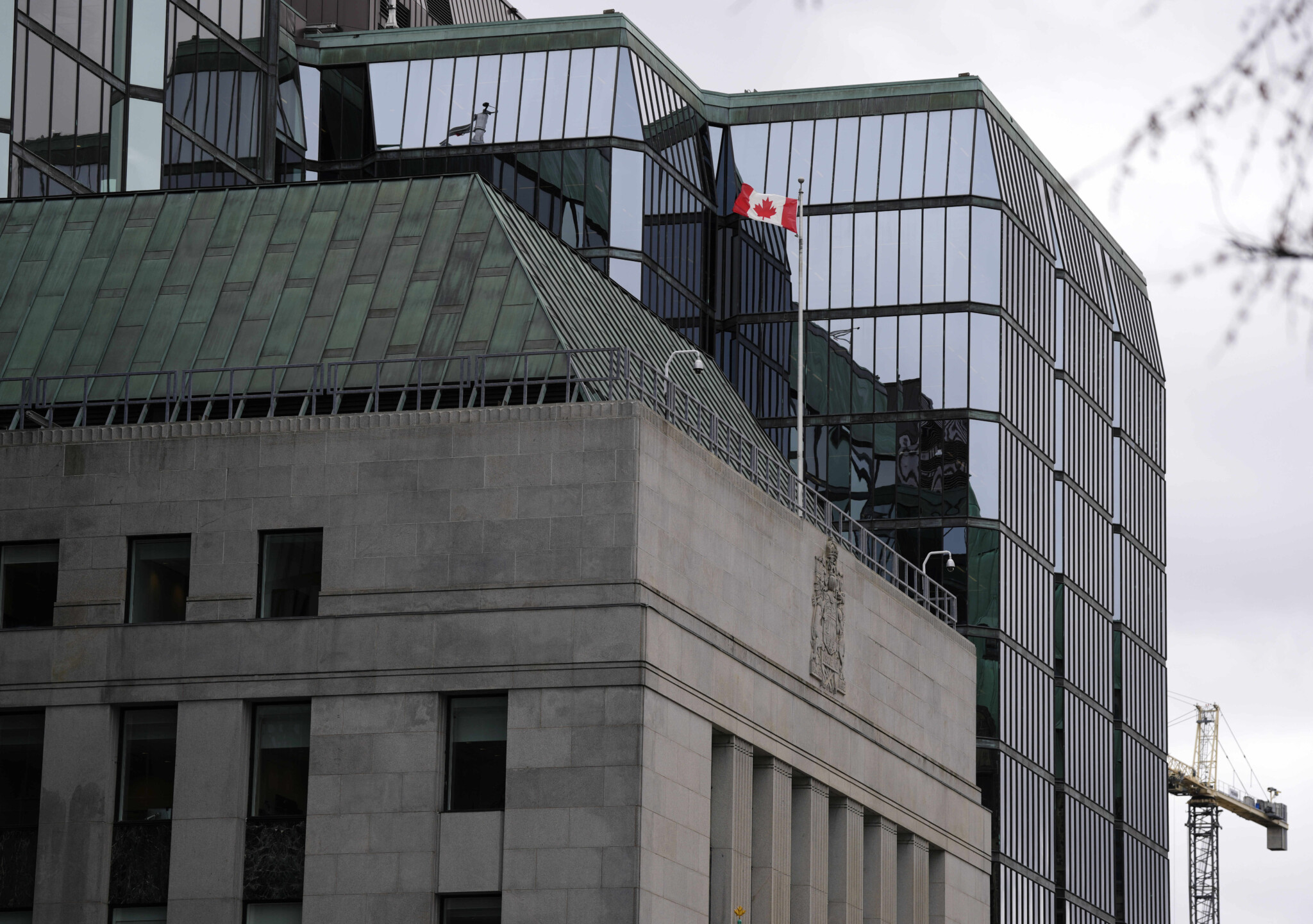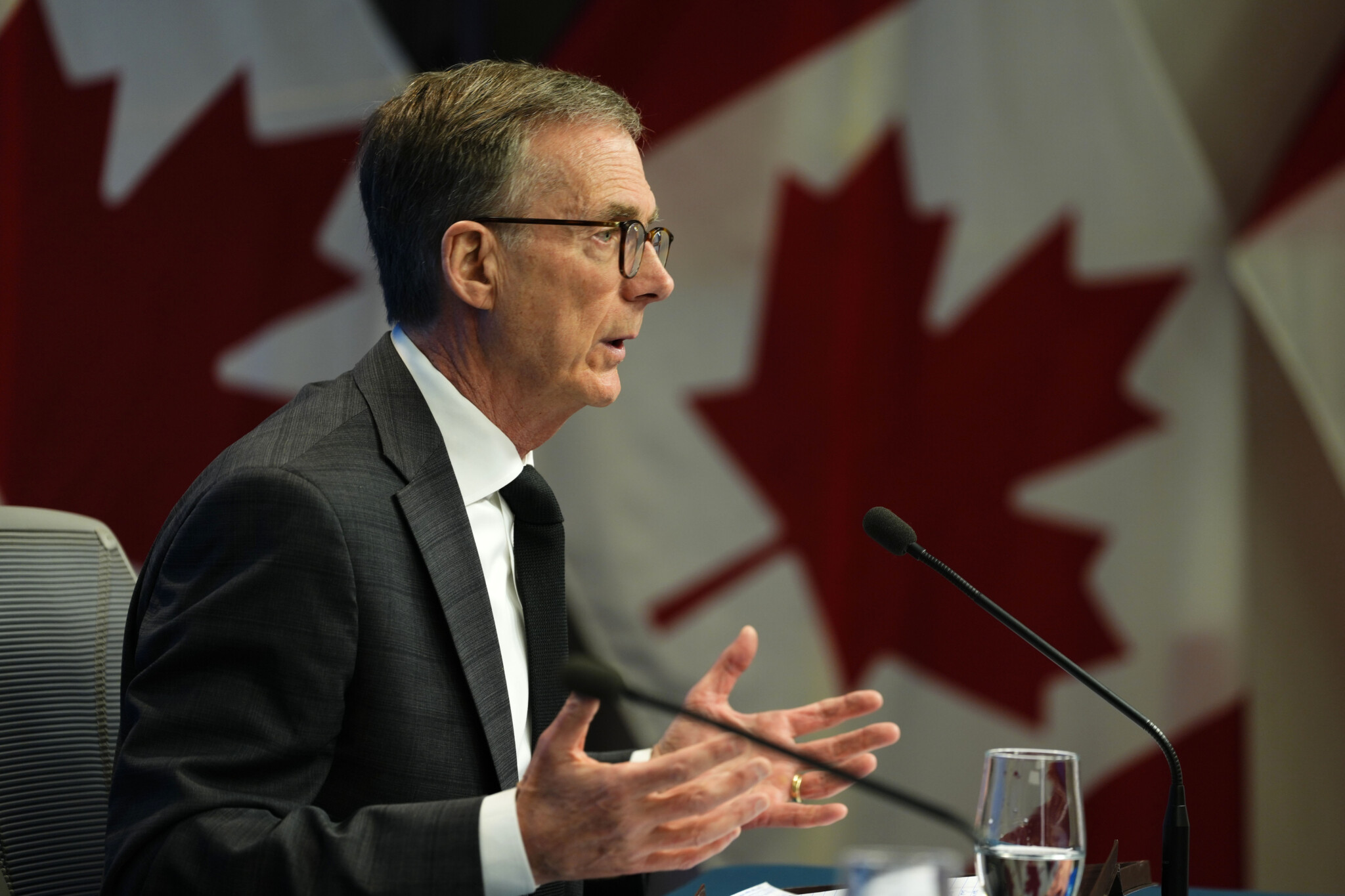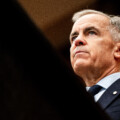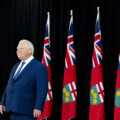DeepDives is a bi-weekly essay series exploring key issues related to the economy. The goal of the series is to provide Hub readers with original analysis of the economic trends and ideas that are shaping this high-stakes moment for Canadian productivity, prosperity, and economic well-being. The series features the writing of leading academics, area experts, and policy practitioners. The DeepDives series is made possible thanks to the ongoing support of the Centre for Civic Engagement.
The outcome of Canada’s recent federal election could have far-reaching consequences for the country’s monetary policy framework. With Prime Minister Mark Carney now at the helm, attention is turning to two pivotal events: the Bank of Canada’s (BoC) mandate review in 2026 and the appointment of a new governor in 2027.
Although the BoC conducts monetary policy independently, it does so within parameters set jointly with the federal government. Therefore, both processes could give Carney an outsized role in shaping the future direction of Canadian monetary policy, a domain in which he has deep personal expertise.
The government’s stance during the upcoming mandate review could help influence whether the BoC retains its long-standing 2 percent inflation target or pivots to an alternative framework, such as nominal GDP (NGDP) targeting—a policy approach Carney has previously endorsed.
Likewise, the next governor’s appointment could set the tone for the BoC’s policy priorities into the 2030s. Against this backdrop, the debate over reforming Canada’s monetary framework is no longer merely academic; it’s now a pressing question of political and economic strategy.
Despite the success inflation targeting has had over the last 30 years, it is time for a change. In many ways, the BoC’s current mandate is broken. The good news is that there’s another option available that can fix it. In its 2026 mandate review, the BoC should retire its inflation target and adopt a level path for NGDP—the dollar value of all final spending in the Canadian economy.
While it hasn’t yet been adopted by central banks, theoretically, it has a lot of advantages and is thus worthy of consideration.
This change to an NGDP level target would give Canadians better protection against supply shocks, while simultaneously making central bank communications easier and the financial system safer—all with the policy tools the BoC already uses.
What’s wrong with inflation targeting
Recent commentary by Trevor Tombe urges policymakers to leave Canada’s 2 percent inflation target alone, arguing that three decades of solid performance by the BoC—and the credibility that adhering to an inflation target has fostered—have made it the status quo for a reason. He further argues that calls to move away from inflation targeting and to have the BoC focus on issues such as employment, the environment, or inequality would be a mistake (not because these issues aren’t important to Canadians, but because tackling them would force the BoC outside of its skillset and abilities). If it ain’t broke, don’t fix it.
Tombe is correct here insofar as most monetary economists and central bankers would agree that fighting inequality and climate change are not issues the BoC can easily tackle with the single tool available to it: the short-term interest rate. However, given that the bank only has one tool at its disposal, the question remains: is an inflation target—that is, aiming to keep the general price level in Canada growing at a slow, stable, and predictable rate—the best that it can do?
The answer is no.
Essentially, what’s broken the BoC’s inflation target is the massive supply shocks Canada has been hit with (and will likely continue to face), first brought on by pandemic-driven supply chain disruptions, and now by Trump’s tariff threats. Left unchecked, adverse supply shocks like those witnessed tend to put upward pressure on prices—why is to say, they drive up inflation. In this case, higher prices are signals, revealing to would-be consumers that goods and services are scarcer than before.
These higher prices put inflation targeters in a conundrum. The higher prices are brought about by a reduction of goods and services available to Canadians, but as mentioned, the BoC only has one tool, and it cannot relieve bottlenecks or negotiate free-trade agreements with an interest rate. Therefore, all the BoC can do is (a) allow the supply-induced price signals to work, or (b) raise interest rates to combat the rising price level. However, in the former case, it would be (at least temporarily) breaking its mandate, whereas in the latter case, it would be strangling an economy already in turmoil, essentially kicking Canadians while they’re already down.
Central banks in general, and the BoC in particular, tend to go for option a) and try to “look through” supply-driven inflation. This certainly seems better than the alternative, however, as Trevor already pointed out, such carving out of exceptions, and the associated talking points to allow such exceptions, have created confusion around what the mandate actually is. This is the inflation targeters’ dilemma.

The Bank of Canada is seen in Ottawa, on Wednesday, April 16, 2025. Justin Tang/The Canadian Press.
What an NGDP target is, and why it’s an improvement
NGDP targeting isn’t a new idea. It has been advocated for by Nobel Prize winners like F.A. Hayek, James Meade, and James Tobin, as well as the former chair of the Council of Economic Advisers in the Obama administration, Christina Romer, and many others. In Canada, on top of Carney’s endorsement, it’s been pushed for recently by senior scholar at the C.D. Howe Institute and (now retired) professor of economics at Carleton University, Steve Ambler, and Nicholas Rowe.
Think of NGDP level targeting as the BoC drawing a smooth, straight, upward–sloping line for total spending in the economy over time—e.g. “$2.8 trillion this year, growing at, say, 3 percent per year going forward”—and doing its best to keep actual NGDP glued to that line from now on. So, if a recession pulls total spending below the line, the BoC would loosen policy (by lowering short-term interest rates) so that NGDP temporarily grows greater than 3 percent annually, until the shortfall is eliminated. Conversely, if a boom pushes spending above the line, it does the opposite—nudging rates higher so spending grows a bit less than 3 percent until the excess is worked off.
Though NGDP can be thought of as total spending in this way, on the other side of the coin, it is just total earnings (as a dollar spent by one is a dollar earned by another). Therefore, an NGDP target essentially would aim to keep Canadians’ nominal income (that is, roughly the numbers they see on their paycheques) growing at a stable and predictable rate rather than the price tags they see when shopping.
How would this work when Canada is facing supply shocks? Supply shocks—think crop failures, an oil embargo, pandemic-related supply-chain disruptions, or (potentially) U.S. tariffs—push prices and real activity in opposite directions. A negative shock shrinks the economy’s capacity while raising costs, while a positive shock does the reverse. When these shocks happen, the inflation targeters’ dilemma emerges.
An NGDP target dissolves that dilemma. Because the rule is to stabilize total dollar spending, the BoC lets the price level absorb the shock. If, say, tariffs knock real growth from 2 percent to 1 percent, keeping the Canadian economy on the same NGDP level path automatically implies a 1 percent increase in the inflation rate. Households can see that price rise for what it is—a reflection of lower supply, not a signal of runaway demand—and the BoC need not engineer a slowdown via higher rates to “correct” it. Symmetrically, a favourable productivity burst that lifts real growth to 3 percent will show up as only a 1 percent decrease in average annual inflation, again allowing for changes in prices only when they reflect changes in the scarcity of goods and services.
Furthermore, if inflation targeting is going to “look through” supply-driven inflation, that requires the BoC to diagnose, in real time, whether price movements come from excess demand or sudden restrictions in supply. That knowledge problem derailed policy on both sides of the pandemic: the BoC loosened too much when prices briefly fell in 2020 and tightened too late when prices surged in 2021.
As academic economists have pointed out, NGDP targeting would relieve central bankers of this epistemic burden. NGDP targeting automatically looks through supply shocks without any discretionary calls or exceptions to the rule needing to be made. Unlike the current regime, NGDP targeting would not require the BoC to observe the unobservable: the output gap, the natural rate of unemployment, or the precise mix of shocks hitting the economy (the things typically estimated by central banks to help them identify when price changes are supply-driven). Instead, it would only have the BoC ask one question: “Is total spending on track?” That simplicity is a feature that cannot be overlooked, given that real‑time data is noisy and later revised.
Additional benefits of NGDP targeting
In practice, the BoC could implement an interest rate rule using the “NGDP gap”—the difference between actual and target NGDP—raising or cutting the overnight rate until the gap closes. Statistics Canada already publishes quarterly NGDP, and the BoC could supplement this with high‑frequency proxies (payrolls, GST receipts, etc.) just as it does now with forecasts of CPI. No estimates of output gaps required, nor any analysis into the causes of price changes.
Easier communication with the public:
This means BoC communications would get a whole lot easier. Nominal gross domestic product is a bit of a mouthful and not likely to resonate with Canadians, it’s true. However, again, NGDP is just a measure of total spending on final goods and services in the Canadian economy, or the other side of the coin, their total income (in current Canadian dollars)—take the number on each working Canadian’s pay cheque and sum it up. The average Canadian likely grasps “total income” more readily than output gaps or “CPI-trim.” A level target also equips journalists with a single, transparent yardstick: is spending on or off the path?
To see why this would aid central bank communication, ask yourself if your friends, cousins, grandmother, or neighbour, understand why we want the general price level to rise at 2 percent per year, why the BoC includes some prices in their preferred measure of CPI and not others, and why sometimes (such as supply shocks) the BoC needs to make exceptions to their rules. Of course not! In fact, I bet few economists can easily explain this. Yet ask if they can understand (and indeed, would prefer) if Canadians’ paycheques and other earnings increased by 3 percent per year on average.

Customers shop in a No Frills grocery store in Toronto, Thursday, May 30, 2024. Chris Young/The Canadian Press.
Put differently, think of what the BoC has to convince the public of any time inflation is below 2 percent. In general, it is hard for the public to understand wanting and trying to manufacture higher prices. During a recession (like 2008 or the beginning of COVID) when inflation tends to decline, the typical inflation targeting response would be to cut rates to get inflation back up to target. But communicating this is difficult. In fact, the public is usually outraged to hear news reports that the BoC is trying to raise its cost of living (i.e., get inflation back up to target) precisely when many people are suffering from a recession. Under the same circumstances, NGDP targeting would likewise call for cutting interest rates, but this can be communicated as raising the public’s average income—the emphasis on pay cheque growth, not price tag growth. Again, in both cases, the central bank is essentially doing similar things, but what elements they can highlight to the public in either scenario matters.
Built‑in financial stability:
At least implicitly, when I take out a mortgage or car loan (which by convention are fixed in nominal values), I am projecting about the future. Sure, unexpected inflation or deflation can mess with these projections, but what really matters for my ability to pay off these loans in the way I expect is my future stream of income.
In general, because most Canadian mortgages and business loans, etc., are fixed in dollar terms, shifts in NGDP partly reallocate risk between borrowers and lenders. If NGDP grows more slowly than expected, that means, on average, people’s incomes are growing more slowly than they expected. Real debt burdens rise as a result, because the debt‑to‑income ratio ends up higher than Canadians had planned on when agreeing to loan contracts in the first place. Keeping NGDP growth on a predictable path, therefore, cushions the credit system far better than stabilizing the CPI. Whereas an inflation target guarantees (slow and steady decline in) the purchasing power of money, it doesn’t guarantee that incomes will materialize to service fixed‑nominal contracts.
Furthermore, because an NGDP level target promises to “catch up” after a demand shortfall, borrowers and lenders know that weak years will be followed by above‑trend gains in economy‑wide cash flow, and vice versa. The real value of outstanding loans, therefore, moves with, not against, the ability to service them, providing a built‑in “automatic insurance mechanism.”
In fact, a slew of formal models and empirical work now show that NGDP targeting would dampen the credit cycle, lower default probabilities, and shrink the fiscal cost of crisis management. For example, see the theoretical work by senior policy adviser at the Federal Reserve Bank of Dallas, Evan Koenig, and former president of the Federal Reserve Bank of St. Louis, James Bullard, as well as some of my own empirical work on this topic. In effect, NGDP targeting shifts some macroeconomic risk from over‑leveraged households to the diversified investor base that holds Canadian government bonds. The result is built-in financial stability, which is generated not by new regulations or additional macro-prudential policies but by stabilizing the flow of dollars households use to pay their bills.
Taken together, a nominal‑GDP rule would be more robust to supply shocks, make for easier communication and improved financial stability, making a level path for NGDP more advantageous for Canadians than the promise of 2 percent inflation. With these advantages on the table, we can now turn to some common objections.
Some objections answered
NGDP is too hard for the BoC to measure in real time:
There are indeed errors in the measurement of both inflation and NGDP growth, but at least, as economist Scott Sumner has pointed out, NGDP is a more objectively measured concept. NGDP can be measured by simply counting up what’s in Canadian firms’ cash registers—the dollar sales of farms, factories, and computer firms, etc., aggregating up the income of Canadians. Counting revenues or incomes can be difficult, but it is conceptually straightforward. Inflation, by contrast, requires statisticians to guess how much better today’s smartphone and sneaker are than last year’s—an unavoidably subjective exercise. The fewer judgment calls needed to construct the data set, the more objective the anchor for monetary policy. That is another point in NGDP’s favour.
Furthermore, to the extent that inflation data is more readily available than NGDP data, it is likely endogenous to the fact that the BoC currently uses inflation as its nominal anchor. A shift in the nominal anchor would likely change the focus of what data Canadian statisticians collect and when.
Lastly, as already discussed, in practice, inflation targeting often doesn’t merely require real-time inflation data, but additional variables like the output gap. If estimating NGDP is a problem in real time, this problem is only exacerbated when needing to know the size of the present output gap.

A real estate sale sign is shown in a west-end Toronto neighbourhood Saturday, March 7, 2020. Graeme Roy/The Canadian Press.
Future inflation will be volatile and unpredictable with an NGDP level target:
It is true that under an NGDP target, the path of prices could, in theory, become indeterminate. However, there are two points to be made here. First, as the current regime allows bygones to be bygones, the future price level is already indeterminate—this is called “base drift,” and is a well-known feature of inflation targeting. However, the more important point is that under NGDP level targeting, the base drift of the price level becomes a feature, not a bug.
This is because the level aspect of the NGDP level targeting ensures there will be no base drift on the nominal anchor (which would be NGDP), as bygones are no longer bygones—the BoC would be committed to making up for past mistakes. Therefore, under an NGDP level target, any base drift in the path of prices can only come from unexpected deviations of real output growth, such as supply shocks. This ensures that any deviations of inflation from trend allow prices to do their jobs as signalling fundamental changes in the underlying economy.
Time to reclaim our position as innovators and global leaders
Canada has a long history of being an innovator and global leader in monetary policy and our banking system. Long before the BoC opened its doors in 1935, the Bank Act of 1870 established a banking system that helped stabilize NGDP and was robust against financial panic. It worked far better than the National Banking System of the United States, and was in fact the envy of the world. Later, during the Bretton Woods era, Canada was the first country to experiment with flexible exchange rates—a practice now common among nearly all central banks. In the early 1990s, along with New Zealand, Canada was one of the first countries to adopt an explicit inflation target. And during the 2008 global financial crisis, the BoC was one of the first central banks to use forward guidance as a policy tool—credibly communicating to the public what interest rates the BoC will target in the future. Targeting the path of NGDP could be the BoC’s next opportunity to try something no other central bank has tried before.
Conservatively sticking to the status quo and declining to adjust the BoC’s mandate is neither good for Canadians nor itself very Canadian in its timidity.
The 2026 mandate review offers Canada yet another chance to innovate on monetary policy. We should reclaim our spot as a world leader, seize the moment, and move the target from the price tag to the pay cheque.










